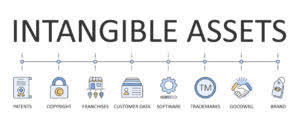Accumulated Other Comprehensive Income AOCI Overview, Breakdown

AOCI will be reported on the company’s balance sheet as a component of shareholder equity, in addition to appearing on the comprehensive income statement as part of Other Comprehensive Income. Be sure to categorize AOCI correctly statement of comprehensive income (e.g., investments, foreign exchange, retirement plans, and other financial assets). In summary, the net income formula is an essential metric for assessing a company’s financial performance, as it reflects the remaining profit after accounting for all revenue and expenses. It highlights the business’s profitability and provides insights into its capacity to grow, distribute profits to owners or shareholders, and reinvest in its operations.
Cost Method
- It is calculated by subtracting total expenses from total revenues, providing a snapshot of operational efficiency and profitability.
- By subtracting the operating expenses, taxes, and interest expense from the total revenue, you can determine the net income of the company.
- CFI is on a mission to enable anyone to be a great financial analyst and have a great career path.
- The notes (which are to be referenced on each financial statement) disclose important information regarding the amounts appearing or not appearing on the financial statements.
- However, net income does not capture all the financial activities that can affect a company’s equity.
Proper reporting of comprehensive income extends beyond compliance; it provides a clear, accurate picture of a company’s financial health. Meticulous adherence to these reporting guidelines enhances transparency and builds trust with stakeholders. These disclosures help users of financial statements understand the nature and impact of OCI items on a company’s financial position and performance. Companies must adhere to specific disclosure requirements when reporting bookkeeping comprehensive income.
- The cost of inventory should include all costs necessary to acquire the items and to get them ready for sale.
- Since the corporation’s shares of stock are publicly traded, the consolidated financial statements must be audited by a registered firm of independent certified public accountants.
- Understanding the net income formula is essential for both business owners and investors, as it provides insights into a company’s financial health and the effectiveness of its operations.
- A balance sheet heading or grouping that includes both cash and those marketable assets that are very close to their maturity dates.
Challenges in Measuring National Income
The third section of the statement Law Firm Accounts Receivable Management of cash flows reports the cash received when the corporation borrowed money or issued securities such as stock and/or bonds. Since the cash received is favorable for the corporation’s cash balance, the amounts received will be reported as positive amounts on the SCF. If accounts payable decreased by $9,000 the corporation must have paid more than the amount of expenses that were included in the income statement. Paying more than the amount in the income statement is unfavorable for the corporation’s cash balance. As a result the $9,000 decrease in accounts payable will appear in parentheses on the SCF.

Pension and Post-Retirement Adjustments

It provides a seamless narrative of equity changes, enhancing the overall coherence of financial reporting. Pension and post-retirement benefit adjustments also play a role in comprehensive income. These adjustments account for changes in the value of pension plan assets and liabilities, which can be influenced by factors such as changes in actuarial assumptions or investment performance. Including these adjustments helps stakeholders understand the long-term obligations and financial health of the company’s retirement plans. When analyzing financial metrics, it is crucial to factor in the impacts of non-operating items and annual variations to accurately assess a company’s performance.

Create a free account to unlock this Template
Total Expenses represent all costs incurred by the business, including the cost of goods sold (COGS), operating expenses, interest, and taxes. In conclusion, net income is a vital metric in understanding a company’s financial health and evaluating its performance. Proper interpretation, however, requires careful analysis of the accounting methods used and examining the context of the business to ensure accurate assessment. Cash and other resources that are expected to turn to cash or to be used up within one year of the balance sheet date. The systematic allocation of the cost of an asset from the balance sheet to Depreciation Expense on the income statement over the useful life of the asset.
Financial statements are essential tools for stakeholders to assess a company’s performance and financial health. Among these, comprehensive income provides a broader view than net income by including all changes in equity that are not the result of transactions with owners. By understanding comprehensive income, we can better analyze a company’s financial performance and make more informed decisions about its potential as an investment.
